Viral Rap: Protest Songs on YouTube
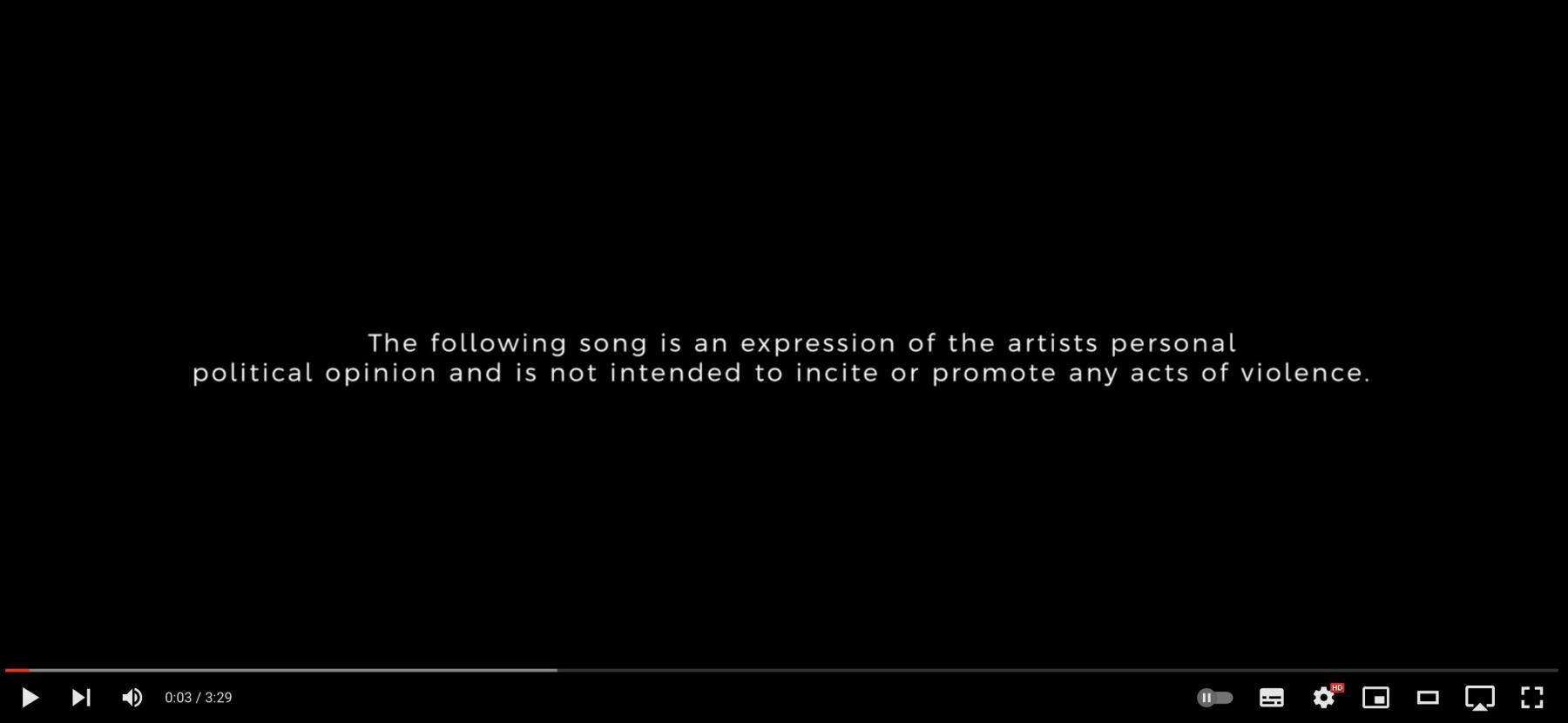
Screengrab from the music video Ache Din? (Good Times?) by VAN M (30 December 2019).
On 11 December 2019, the Indian Parliament passed the controversial Citizenship (Amendment) Act, 2019 (CAA), which provided eligibility for Indian citizenship to all non-Muslim immigrants from Afghanistan, Bangladesh and Pakistan who entered the country before 31 December 2014. The CAA was passed while the updating of the National Register of Citizens (NRC) was undergoing in Assam, the first state to do so. The objective of the NRC is to document and deport illegal immigrants in the state. It becomes impossible to read CAA without NRC. The NRC rendered over 19 lakh (or 1.9 million) people stateless, more than thousands of whom have been incarcerated in various detention camps in the state. Assam is also the first site where the CAA protests escalated before the bill was tabled in parliament. Between December 2019 and January 2020, several protest songs against the CAA emerged from Assam and were released on various YouTube channels.
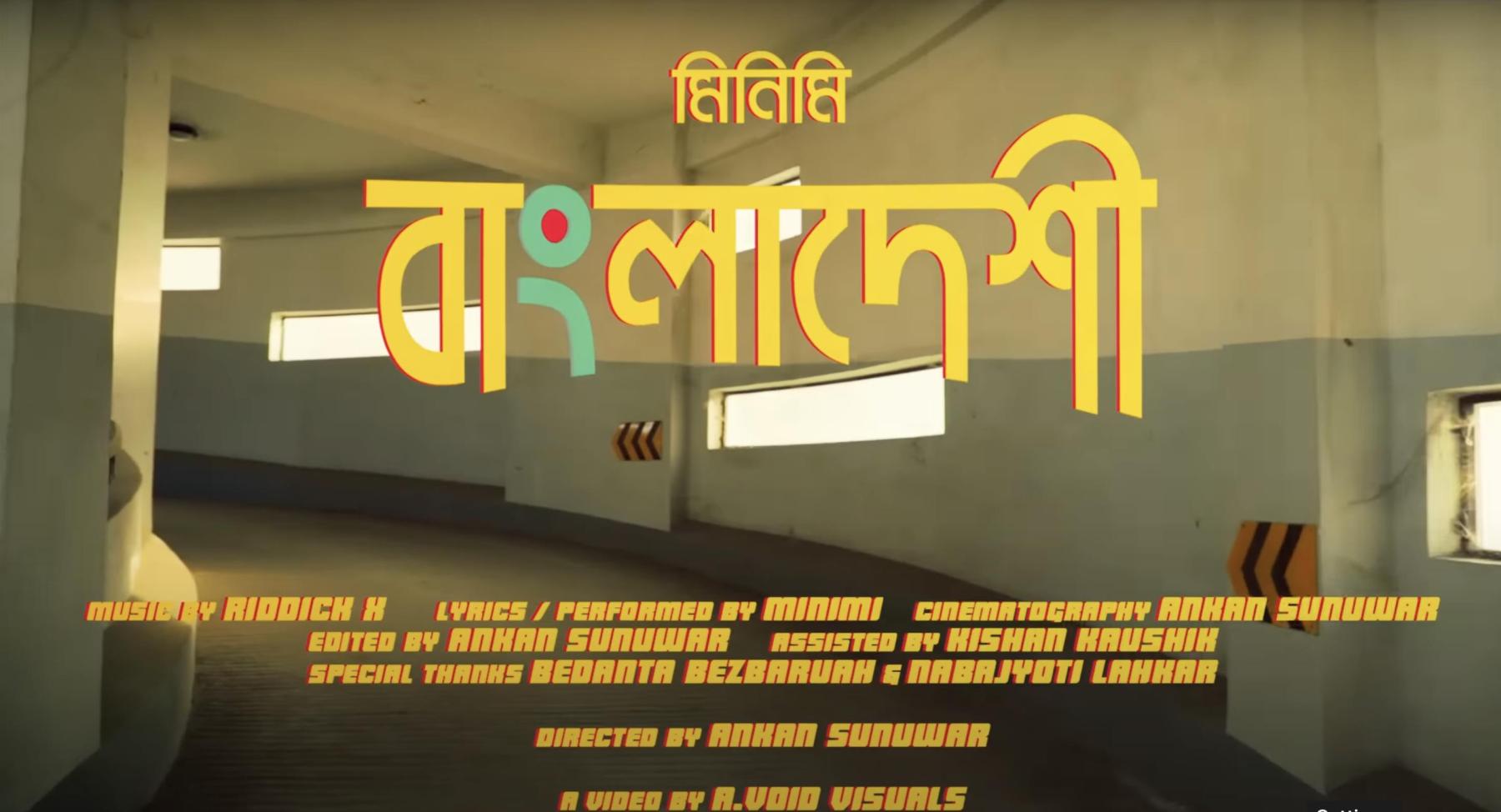
Screengrab from the music video Bangladeshi by Minimi (9 November 2018).
The videos of the songs drove immense conversation in their comment sections and became the anthem of the Assamese CAA protests. Artists used these songs as a way to vent their anger against this perceived unjust imposition. The discussion generated around the YouTube protest songs reflects the ingrained anxiety about “illegal migrants”, which is then concretised as this genre of songs propagates the criteria of “ethnic Assamese” identity. Three of these music videos, which ended up in many a listicle on the CAA protests in Assam, are Bangladeshi by Minimi, Ache Din? by VAN M and No CAA by Vayu Vrse, all released through YouTube.
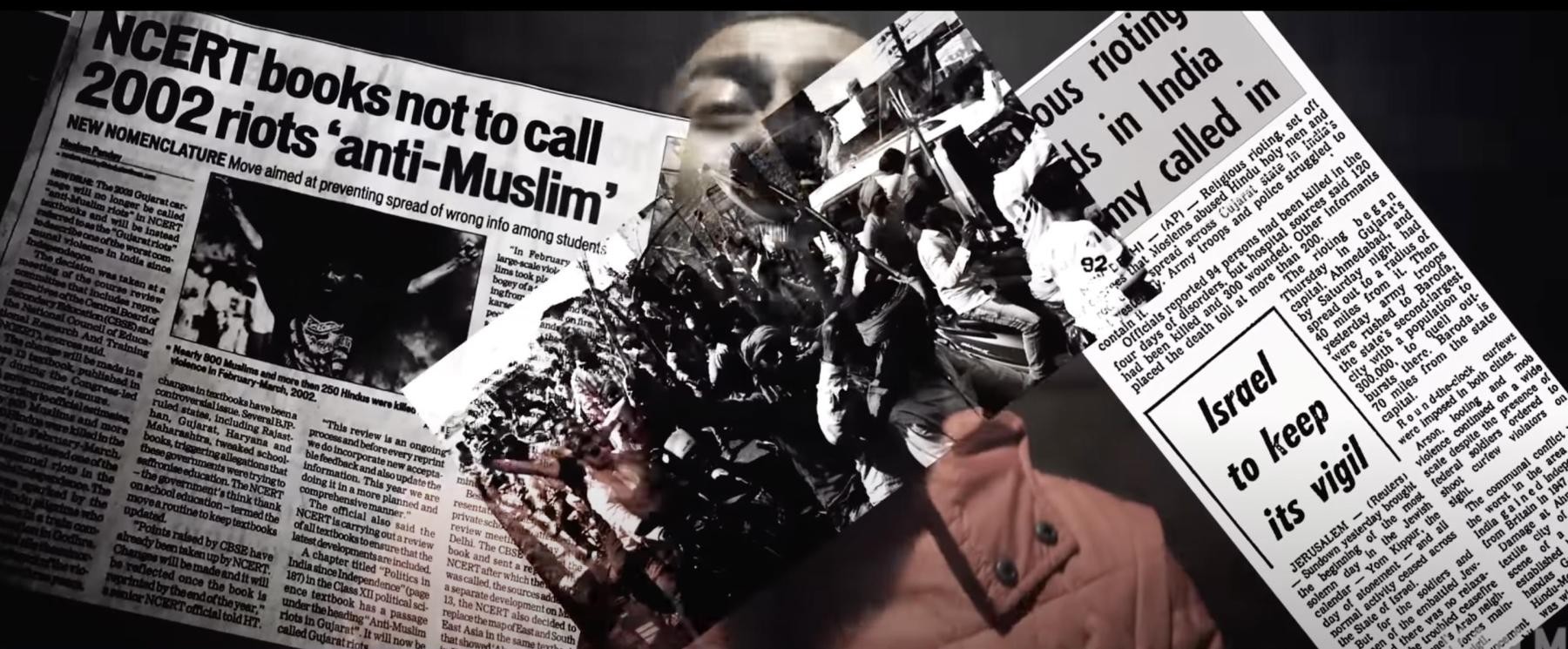
Screengrab from the music video Ache Din? (Good Times?) by VAN M (30 December 2019).
These “authentic” angry Assamese rappers used music as a potent way to vent their anger against the injustice of the institutionalisation of the CAA. Most of the comments on Minimi’s video focus on the idea of an authentic Assamese identity—the “Khati Axomiya” (unequivocally Assamese)—and the intense anger against ethnic dilution. In this regard, it is important to understand how, in the contemporary political moment in Assam, “indigeneity” has become a troubling category. Former ULFA leader, Anup Chetia, through his Khilonjiya Manch (Indigenous Forum of Assam), declared that those residing in the state before the Treaty of Yandaboo (1826) would be considered indigenous (khilonjiya), thereby excluding the Adivasis and the Gorkhas among other communities. As social scientist, RK Debbarma, claims, “Indigeneity is now deployed by dominant groups who control state power, not as a tool for empowerment, but as a tool for discriminating and excluding groups deemed to be immigrants.”
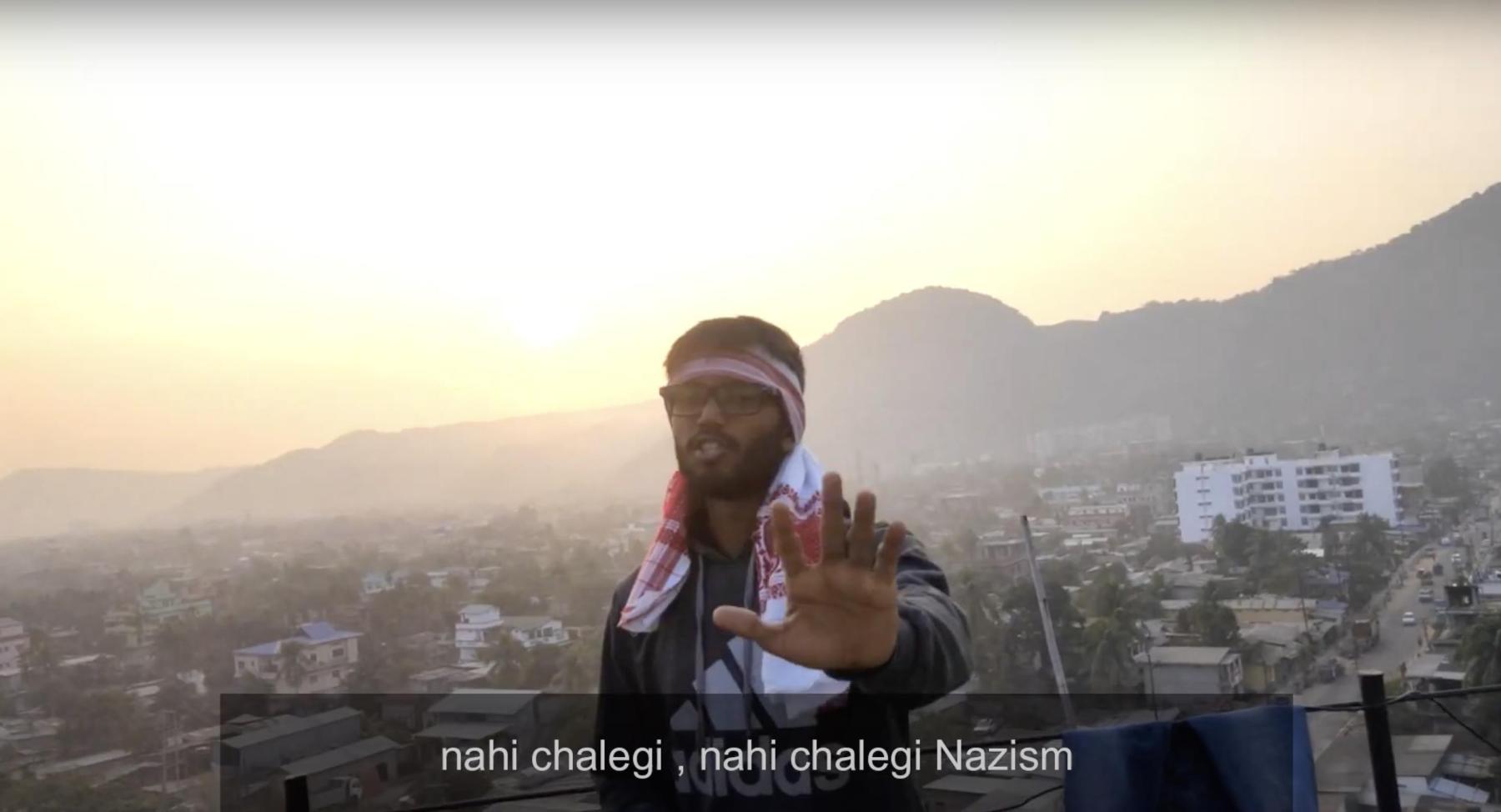
Screengrab from the music video No CAA by Vayu Vrse (29 December 2019).
Minimi’s track, (which until February 2024, had garnered 640,706 views and over 2,000 comments) however, drew criticism for being overtly xenophobic. The lyrics can be considered inflammatory and may be interpreted as a call for violence. VAN M’s rap, Ache Din? meanwhile, until February 2024, had amassed 672,107 views and more than 4,000 comments. A physics teacher by profession, he also echoes the strains of Minimi in their common outrage against the “outsider” who, they believe, will be sheltered through the implementation of CAA. Vayu, in contrast, is the only one who eschews the Assamese minority argument and dwells instead on the failure of the government to uphold the ideals of secularism and democracy. It is pertinent to observe that Vayu’s is the least popular video amongst the three, if we consider the viewership statistics with 25,575 views and just over a hundred comments (as of writing this piece).
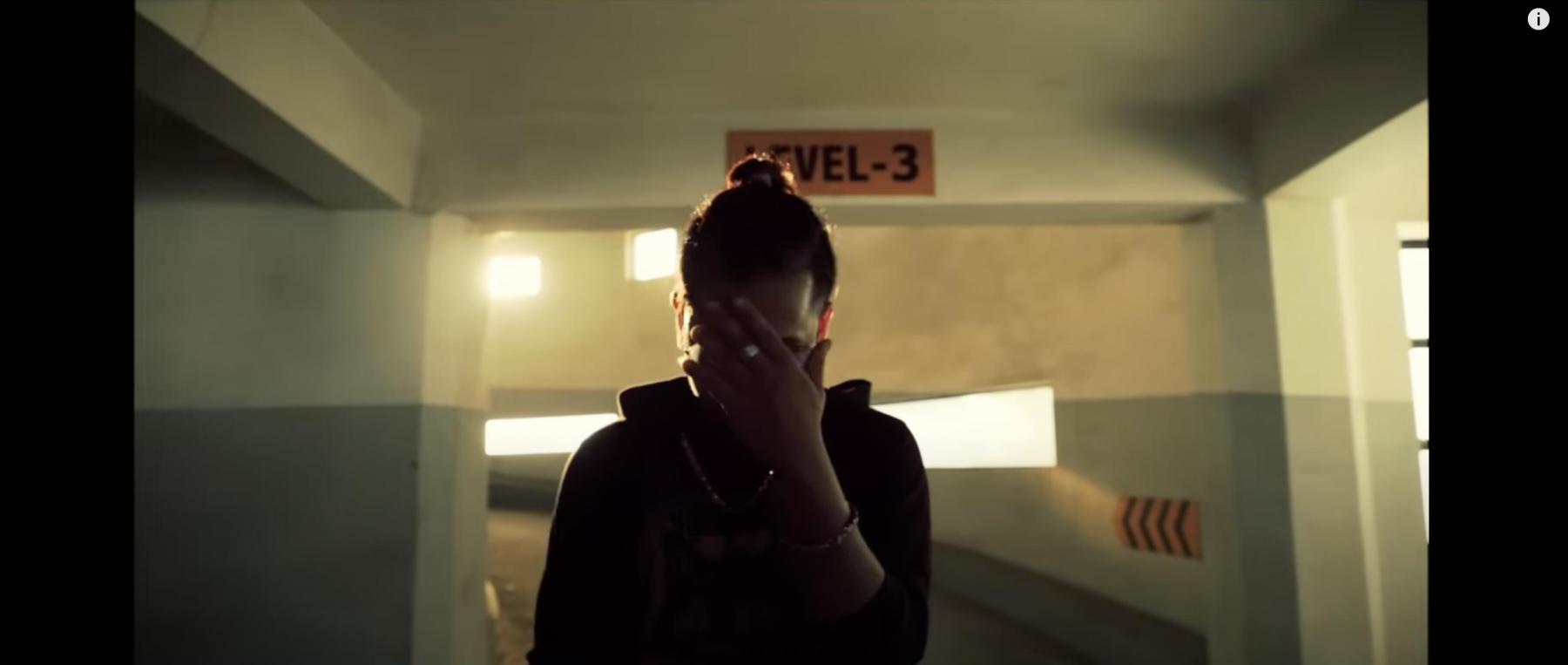
Screengrab from the music video Bangladeshi by Minimi (9 November 2018).
On a formal note, the myopia of Minimi and VAN M is reflected in their choice of video aesthetics as well. Their videos are shot within the ambit of single locations—a parking lot, a terrace and the dimly lit contours of a thatched room. While these choices may have an economic compulsion, they reflect their perspective on the issues at the core of their content. Vayu Vrse utilises news agency clips and personal footage to reflect on the wider, more universal themes that an act like CAA touches upon. Anna Munster, when discussing the “contagiously spreading” viral object, draws from David Stern’s vitality effects. She contends that viral transmission (of media) is affected through an emotional currency. In the case of these rap videos, it is no wonder that the ones which appeal to the more local rhetoric—of who is an ethnic Assamese—gain more visibility in this mediated age, while the deeper reflections from Vrse generate relatively muted circulation and views. In other words, the stronger the fervour of the angry Khati Axomiya, the more likely it is to become viral. Thus, we find that a widely shared rap’s ability to provoke political, emotional and cultural biases corresponds to its viral potency.
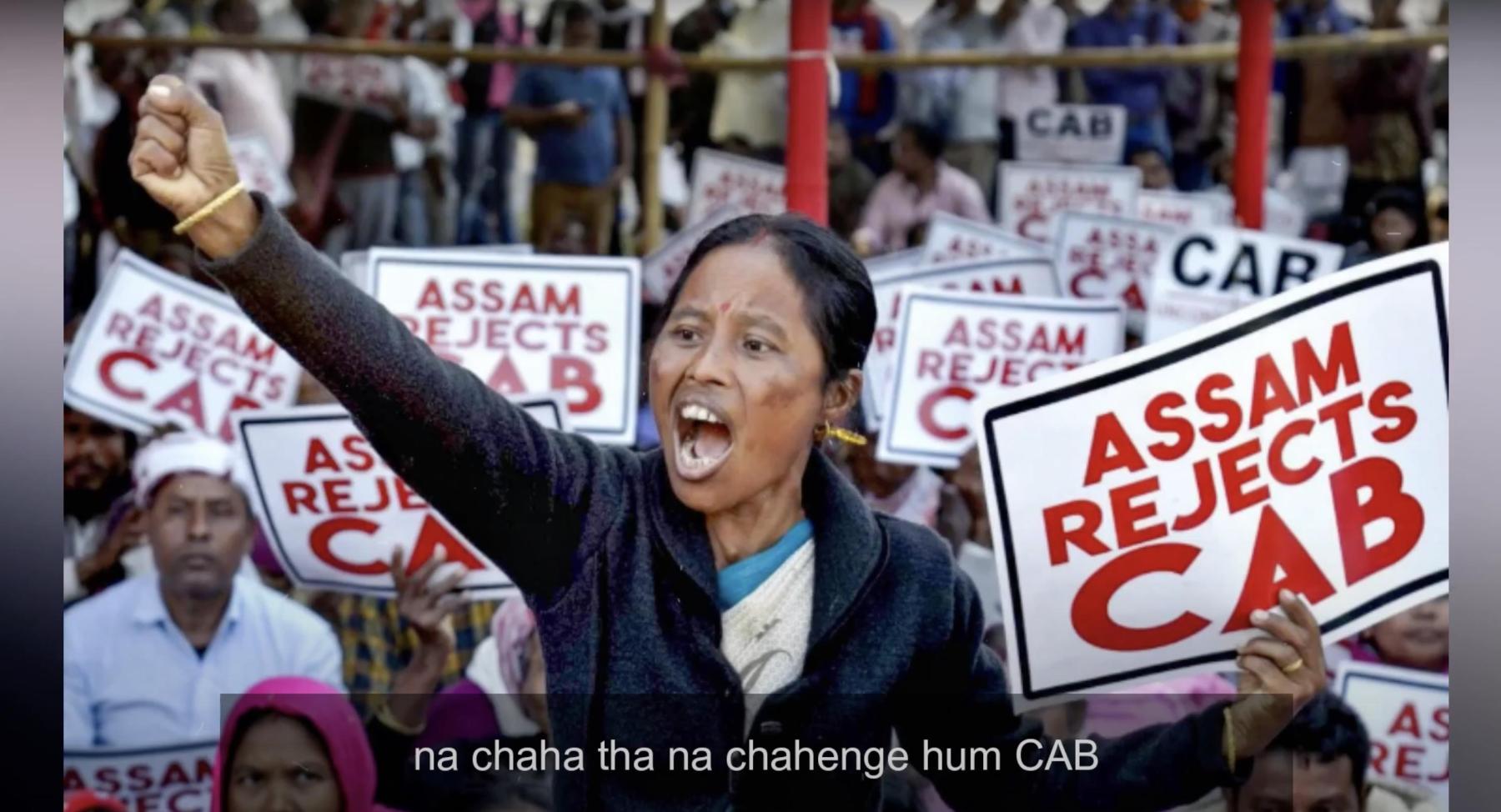
Screengrab from the music video No CAA by Vayu Vrse (29 December 2019).
To learn more about contested identities in India, read Ankan Kazi’s reflection on documentary films that address questions of political violence. Also read Raghu Pratap’s poem The State of Goodbye, which is framed around the city of Guwahati.
All images courtesy of YouTube.




